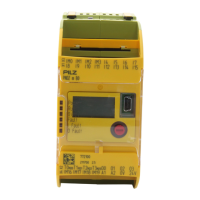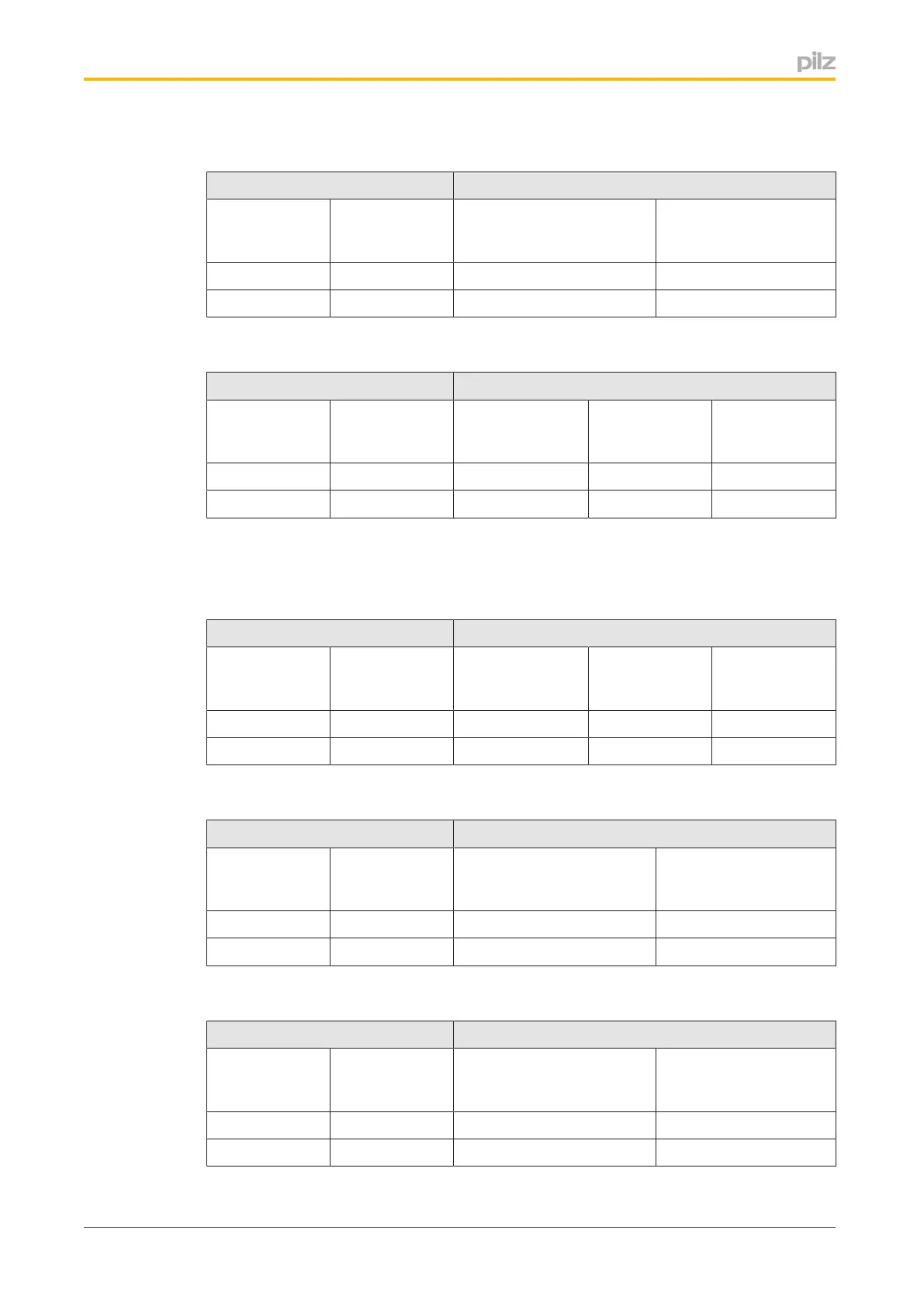

Do you have a question about the Pilz PNOZmulti 2 and is the answer not in the manual?
| Brand | Pilz |
|---|---|
| Model | PNOZmulti 2 |
| Category | Control Unit |
| Language | English |
Explains the meaning of symbols used for warnings and information in the manual.
Details communication using fieldbus modules and lists supported device combinations.
Describes communication via communication modules, including RS232 and Ethernet interfaces.
Explains Modbus TCP communication, its server role, and possible device combinations.
Specifies the intended purpose of the communication interface and lists improper uses.
Covers safety regulations, qualified personnel, warranty, liability, and disposal procedures.
Covers fundamental aspects of input/output data, tables, and segment access for fieldbuses.
Details cyclical data, table segments, LEDs, service, and diagnostic data for the Profibus module.
Explains Service Data Objects (SDOs), service data, and Process Data Objects (PDOs) for CANopen.
Covers SDOs, service data, and PDOs for the EtherCAT module, detailing object directory structure.
Details SDOs, service data, and PDOs for the Powerlink module, including object directory.
Describes cyclical data, table segments, LEDs, and service data for the Profinet module.
Covers cyclical input/output data and service data for the Ethernet/IP module.
Outlines the functions and possible combinations of communication modules.
Details the connection and transmission rate for the RS232 communication module.
Describes ETH module features, Modbus/TCP, RJ45 interfaces, and connection requirements.
Explains the client-server communication process for Ethernet interfaces.
Details the structure of communication telegrams, including header, payload, and footer.
Describes virtual inputs, watchdog, virtual outputs, and LED status for communication.
Lists available requests for sending/receiving data, masks, and control bytes.
Lists prerequisites for using Modbus/TCP, including software version and hardware.
Introduces Modbus/TCP as a standard and its client/server communication model.
Explains Modbus/TCP interface, connection management, and data area access.
Details Modbus/TCP data areas, function codes, transfer limits, and I/O data mapping.
Provides examples of devices acting as clients and servers in Modbus/TCP networks.
Introduces diagnostic words for element status and error messages.
Lists elements that can store status and are accessed via Element IDs.
Explains the 16-bit structure of the diagnostic word and its bit meanings.
Describes methods for evaluating diagnostic words in user programs, PVIS, or via interfaces.
Provides a practical example of evaluating a safety gate's diagnostic word.
Covers process data for base units, including inputs, outputs, and system/IO LEDs.
Details process data for fieldbus/communication modules, including virtual I/O and system LEDs.
Explains diagnostic words and their addressing for elements within the configurator.
Describes how elements are enabled via IDs and element addressing.
Covers project data like check sums, date, project name, and their addressing.
Details device-specific data such as product info, firmware, and operating hours.